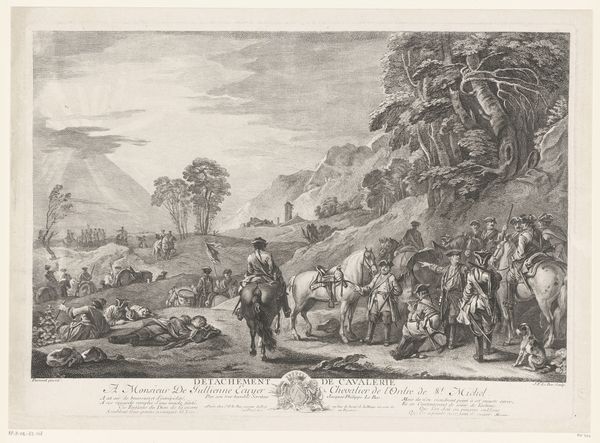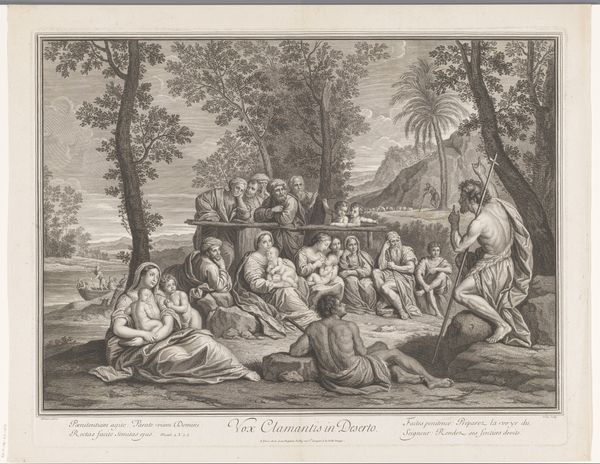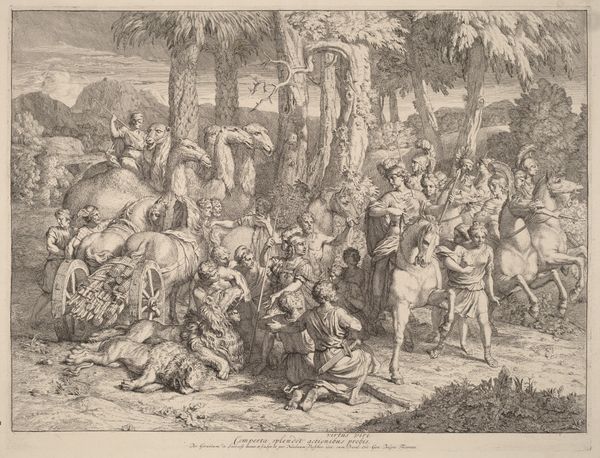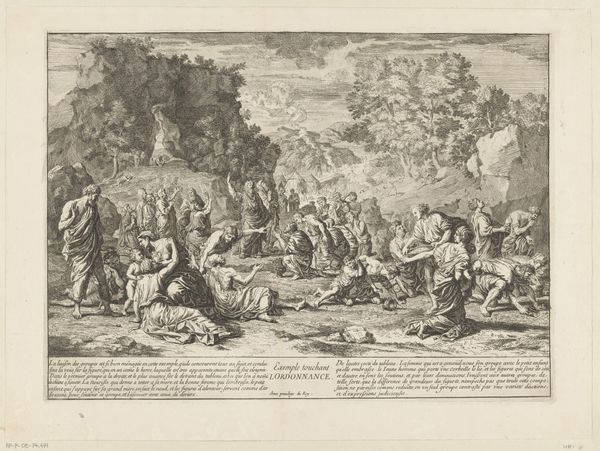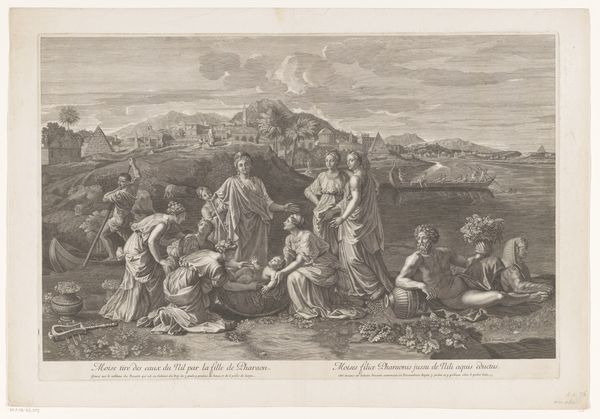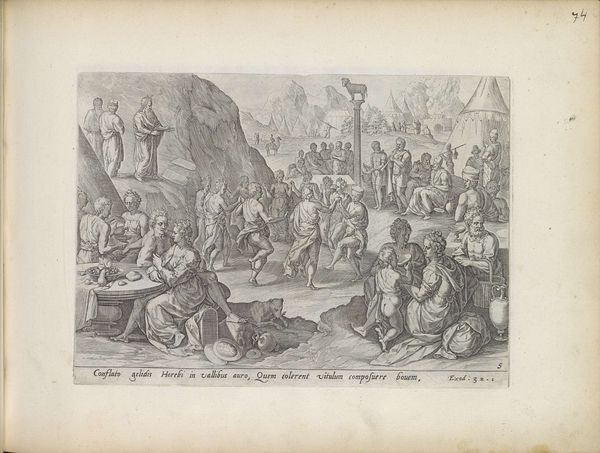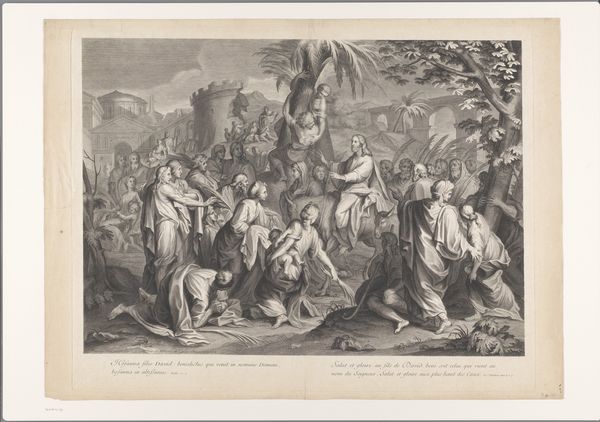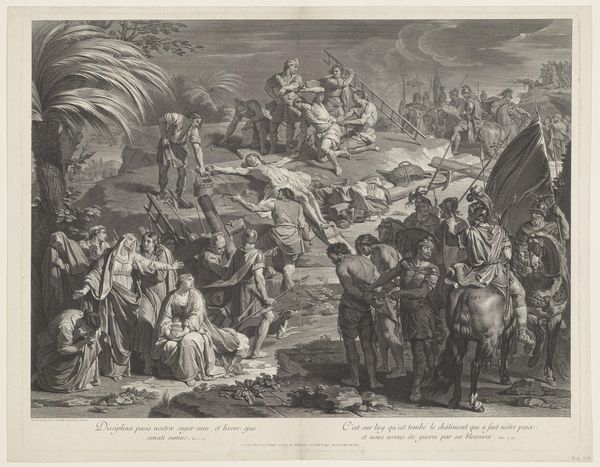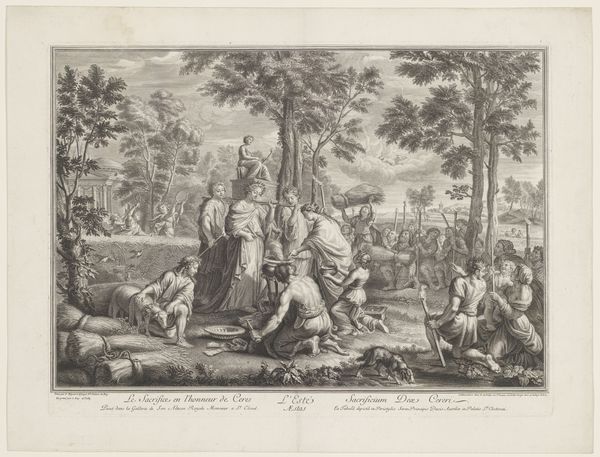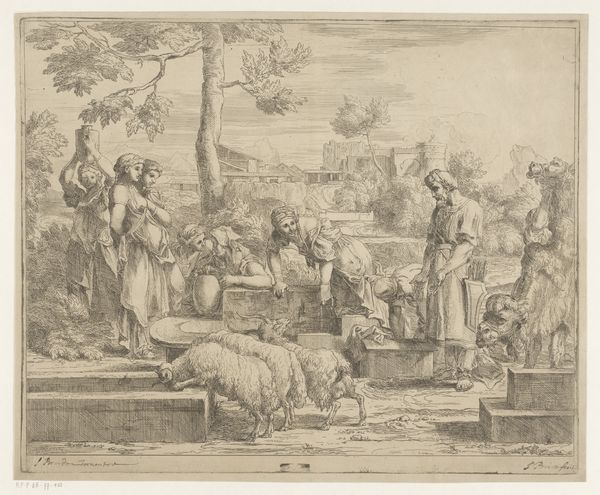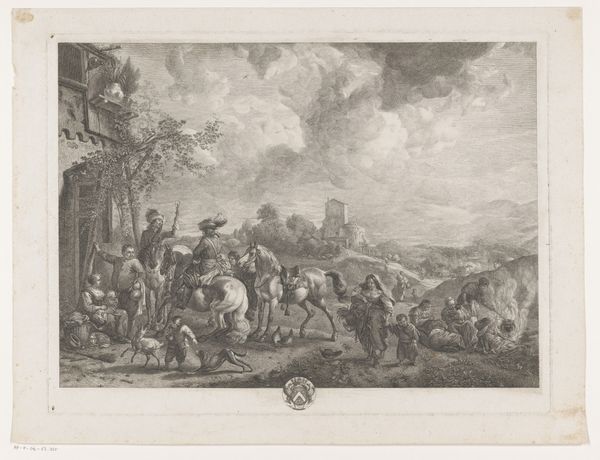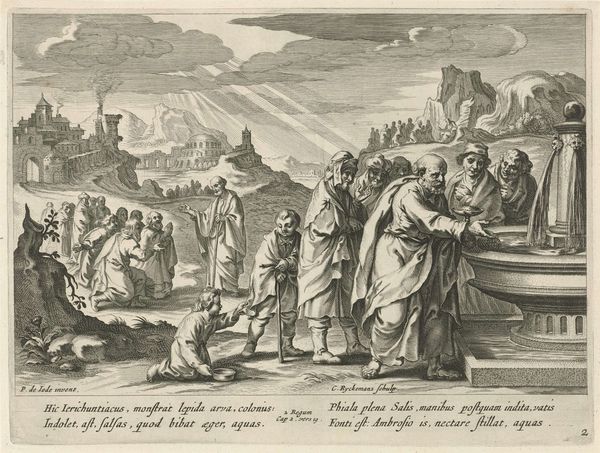
engraving
#
narrative-art
#
baroque
#
old engraving style
#
history-painting
#
engraving
Dimensions: height 537 mm, width 758 mm
Copyright: Rijks Museum: Open Domain
Editor: This is a striking engraving called "The Adoration of the Golden Calf," believed to be made between 1650 and 1706 by an anonymous artist. The detail is incredible, almost overwhelming. I am curious, with so many figures depicted in what appears to be a chaotic scene, what specific aspects of this image stand out to you? Curator: My eyes are immediately drawn to the contrast between order and chaos, represented through very compelling visual cues. Notice how the figures around the golden calf, a symbol of immediate gratification, engage in revelry – drinking, dancing, seemingly lost in the moment. These actions speak to humanity's vulnerability to fleeting pleasures. What historical or cultural memory do you see encoded here? Editor: Well, it's hard to ignore the clear biblical reference. This moment comes during the exodus, where the Israelites have lost faith in Moses and God. They revert to old habits and manufacture their own deity out of gold. I hadn't noticed the deeper cultural context embedded in the idol. Curator: Exactly. This engraving, while depicting a specific biblical event, speaks to a broader human tendency to create idols – tangible representations of power or security that distract us from more profound, lasting values. What does the presence of the children, specifically, suggest in relation to the event? Editor: That even future generations can be seduced, that bad habits can be acquired and become cultural? I did not realize how potent such old-looking imagery could still be. Curator: These are potent themes! So much can be said for its depiction of moral failings. Cultural memory is deeply encoded within images like these. Editor: Definitely makes you see old art in a different light! It's more than just illustration, but loaded with timeless ideas and messages.
Comments
No comments
Be the first to comment and join the conversation on the ultimate creative platform.

